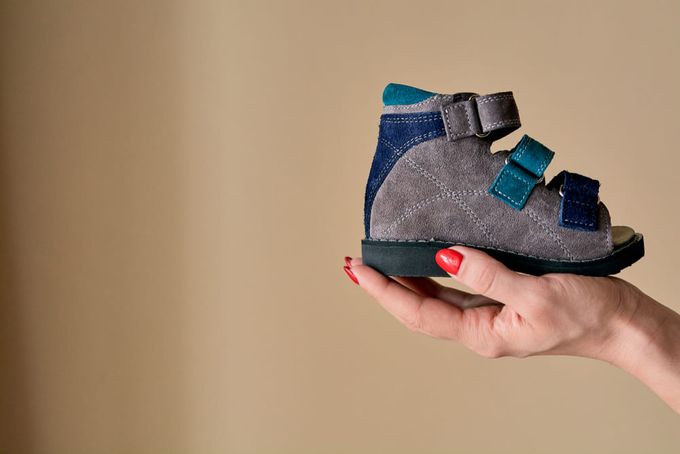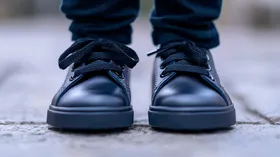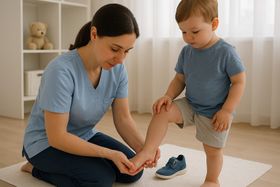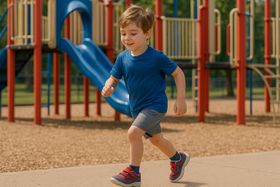Spina Bifida Conditions and Symptoms Every Parent Should Know
Spina bifida is a neural tube birth defect that can affect a child's spine and central nervous system. Learn about the signs, symptoms, and treatment options every parent should know.
Updated June 10, 2025

Spina Bifida is a neural tube defect that occurs during the first month of life. The embryo grows a structure that will later develop into the spine and the entire nervous system. This is called the neutral tube. Spina Bifida is the condition where the neural tube or the spine does not develop or grow properly.
The spinal column is the main component of our spine. It is made up of vertebral bodies or the hard bones stacked up vertically and its gaps which are filled with discs made of fibrous tissue. This structure protects the spinal canal that contains the vital and sensitive spinal cord. The spinal cord connects the brain to all the nerves of the body. The canal is further protected by arches of bones.
Spina Bifida happens when a vertebral body does not develop properly or when an arch does not close entirely, leaving a gap or a split on the spine.
Types of Spina Bifida Conditions
There are three types of Spina Bifida conditions and they are classified in accordance with severity of conditions.
Spina Bifida Occulta
Spina Bifida Occulta is the mildest and most common form of Spina Bifida. The gap is very insignificant that the vertebrae appear normal from the outside. A lot of parents may not be even aware of its symptoms or of their child’s affliction. Less than one out of ten babies born have Spina Bifida Occulta. However, there is nothing to worry about as its symptoms and manifestations are rarely detectable and has little to no effect on daily living at all.
Babies born with Spina Bifida Occulta may have a clump of hair growing on its lower back. A dimple or a birthmark on the similar site are also indicative of the disease. Growing up, they may suffer from mild urinary and bowel disorders, weakness of the legs or reduced sensation.
Spina Bifida Occulta can be detected through X-ray and other imaging tests.
Spina Bifida Meningocele
This is the rarest case of Spina Bifida. Meningocele is a more severe condition than the Occulta. The meninges or the protective membrane of the spinal cord is pushed out through the gap. The breach will result to a delicate fluid-filled sac protruding from the baby’s back. A thin layer of skin may cover the sac.
Although the spinal cord is safe and intact, the baby will need an operation to correct the condition. The sac is pushed back and the gap is closed. The operation is done within few months after birth. Babies are expected to fully recover after the operation. However, complications may include partial nerve paralysis and urinary and bowel disorders.
Spina Bifida Myelomeningocele
Myelomeningocele is the most serious type of Spina Bifida. Just like that of the Meningocele, the meninges is pushed out of the opening or gap on the spinal arch, and this time, part of the spinal cord is also exposed. Because of the exposure, the child is prone to many health perils, including some life-threatening disorders.
Serious health implications include urinary and bowel disorders, impaired learning, psychological and social development, partial or complete weakness or paralysis below the spine, mental retardation, hydrocephalus, seizures, and orthopaedic problems like uneven hips, scoliosis, and feet deformities.
Very soon after its birth, preferably within the first 48 hours, a baby with Myelomeningocele needs a surgery to correct the disorder. This is to minimise the risks of infection and damage to the exposed spinal cord. Another operation might be required if the baby is also suffering from severe hydrocephalus or the accumulation of cerebrospinal fluid in the brain.
Babies with Spina Bifida Myelomeningocele have great chances of surviving into adulthood, but will remain under close medical monitoring and care for the most of his or her life. Therapies can help improve independence, movement, and the overall quality of life. They will also need mobility aids, assistive devices, and regular treatments for urinary and bowel disorders.
Causes and Prevention
Folic acid deficiency during pregnancy is linked to Spina Bifida. The vitamin folic acid is pivotal to cell development and growth. However, taking adequate vitamins and folic acid do not eliminate the risk of Spina Bifida. Genetic and other risk factors are also considered significant to the disorder. Mothers with Spina Bifida or have relatives who have Spina Bifida have higher risks of having babies with neural tube defect. Diabetes and obesity of the mother are considered risk factors.
Women planning on having babies should take at least 0.4 milligrams of folic acid a day prior to pregnancy and during its first trimester. Multivitamins and supplements contain folic acid. Foods rich in folic acid include dark leafy greens, eggs, citrus fruits, broccoli, beans, peas, avocado, okra, nuts, corn, carrots, and asparagus. Pregnant mothers of babies with Spina Bifida will not experience symptoms. However, prenatal tests and prenatal ultrasound can detect the disease even before the baby is born.
Care and Support
Children with Spina Bifida Myelomeningocele will require special medical care and support. He or she will need periodic if not regular care of neurologists, urologists, orthopaedists, orthotists, and physical therapists. Parent will also have to make sure that their child is mentally, emotionally, and psychologically well.
Growth and development of muscles, joints, and bones must be strongly sustained and constantly monitored. Because of the threat of developing a progressive spinal cord tethering, the child is at risk of degenerative muscles in the legs and urinary and bowel problems. Spinal cord tethering hampers the normal growth of the vertebrae and the spinal cord.
The most common issue with Spina Bifida is the partial or complete paralysis of the legs and feet. Thus, the child would need orthotic support or leg braces. Other mobility aids and assistive devices include wheelchairs, crutches, walkers, and specially designed shoes. Children’s orthotic shoes provide the needed stability, support, and comfort to little feet with special needs.
Growing, nurturing, and taking care of children with Spina Bifida Myelomeningocele is hard and costly. However, these kids also have great chances of leading normal, independent and happy lives.
First Walkers offers a wide collection of orthopaedic supportive shoes for kids from 6 months to early teens. We never compromise quality, design and your child’s comfort. Click here to check out our top-of-the-line special needs shoes.
Related Articles

How to Stretch Out Shoes for Your Child’s Feet
Babafemi Adebajo
December 1, 2025

6 Best Black Toddler Shoes That Fit Every Outfit
Babafemi Adebajo
December 6, 2024

8 Best Shoes for 1-Year-Olds: From Playdates to Tiny Walks
Jasrah Javed
January 7, 2025

How to Fix Flat Feet in Toddlers: Exploring Potential Solutions
Anjana Iyer
May 18, 2025

10 Best Kid Shoes for High Insteps With Extra Depth
First Walkers
October 27, 2025
